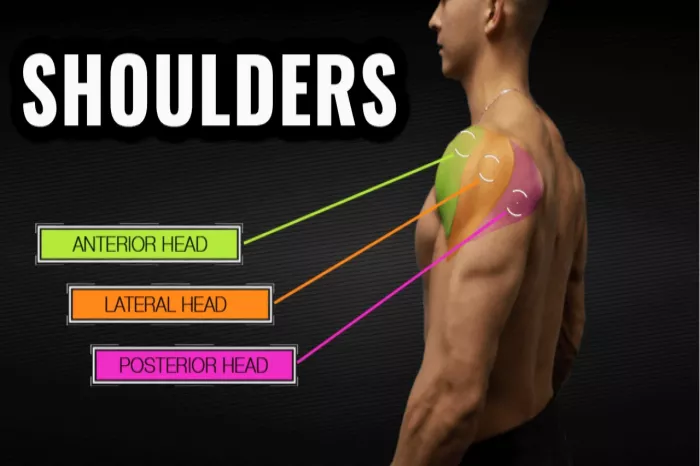Strengthening the ligaments in your shoulders is crucial for maintaining stability, mobility, and overall joint health. Ligaments play a vital role in connecting bones and stabilizing joints, including the complex network of ligaments in the shoulder joint. Strengthening these ligaments can help prevent injuries, improve joint function, and support better performance in daily activities and sports. In this comprehensive guide, we’ll explore effective strategies and exercises for strengthening the ligaments in your shoulders, along with tips on proper technique, progression, and injury prevention.
Shoulder Ligaments
The shoulder joint is one of the most mobile and complex joints in the human body, consisting of several ligaments that provide stability and support. These ligaments include:
- Glenohumeral Ligaments: These ligaments surround the shoulder joint and help stabilize the ball-and-socket connection between the humerus (upper arm bone) and the glenoid (shoulder socket).
- Coracoclavicular Ligaments: These ligaments connect the clavicle (collarbone) to the coracoid process of the scapula (shoulder blade) and help stabilize the acromioclavicular (AC) joint.
- Acromioclavicular Ligament: This ligament connects the acromion (part of the scapula) to the clavicle and provides stability to the AC joint.
- Coracoacromial Ligament: This ligament spans from the coracoid process to the acromion and helps prevent upward displacement of the humerus.
Importance of Ligament Strengthening
Strengthening the ligaments in your shoulders is essential for several reasons:
- Joint Stability: Strong ligaments help stabilize the shoulder joint, reducing the risk of instability, dislocations, and other injuries.
- Improved Function: Strengthening the ligaments can improve joint function, range of motion, and overall shoulder mechanics, enhancing performance in various activities and sports.
- Injury Prevention: Strong ligaments are less susceptible to strain, tears, and other injuries, reducing the likelihood of shoulder problems and improving long-term joint health.
- Rehabilitation: Strengthening exercises can be beneficial for rehabilitating shoulder injuries, such as ligament sprains or strains, by promoting healing and restoring function.
Effective Strategies for Ligament Strengthening
To effectively strengthen the ligaments in your shoulders, consider the following strategies:
- Progressive Overload: Gradually increase the intensity, duration, or resistance of your exercises over time to challenge the ligaments and stimulate adaptation. Start with lighter weights or resistance and gradually progress as your strength improves.
- Proper Technique: Focus on performing exercises with proper form and technique to target the ligaments effectively and minimize the risk of injury. Consult with a fitness professional or physical therapist if you’re unsure about proper exercise technique.
- Balanced Training: Incorporate a variety of exercises that target different muscle groups around the shoulder joint, including the rotator cuff muscles, deltoids, and scapular stabilizers. Balancing strength and flexibility in these muscles can help support overall shoulder stability and function.
- Consistency: Consistency is key to seeing results from your ligament strengthening program. Aim to perform exercises regularly, ideally 2-3 times per week, to build strength and resilience in the shoulder ligaments over time.
- Rest and Recovery: Allow for adequate rest and recovery between workouts to give your ligaments time to adapt and repair. Listen to your body and avoid overtraining, which can increase the risk of injury and hinder progress.
Exercises to Strengthen Shoulder Ligaments
Here are some effective exercises to strengthen the ligaments in your shoulders:
Band Pull-Aparts:
- Stand with your feet shoulder-width apart and hold a resistance band in front of you with both hands, arms straight.
- Keeping your arms straight, pull the band apart by squeezing your shoulder blades together.
- Slowly return to the starting position and repeat for 10-15 repetitions.
External Rotation with Resistance Band:
- Attach a resistance band to a fixed point at waist height.
- Stand with your side facing the band, holding the other end with the hand closest to the band.
- Keep your elbow bent at 90 degrees and your upper arm close to your side.
- Rotate your forearm away from your body, keeping your elbow tucked in.
- Slowly return to the starting position and repeat for 10-15 repetitions on each side.
Scapular Retraction:
- Lie face down on a mat with your arms extended overhead and palms facing down.
- Squeeze your shoulder blades together and lift your arms off the ground, keeping them straight.
- Hold for a few seconds, then lower your arms back down.
- Repeat for 10-15 repetitions, focusing on the contraction of the shoulder blades.
Wall Slides:
- Stand with your back against a wall and your feet hip-width apart.
- Place your arms against the wall with your elbows bent at 90 degrees and palms facing forward.
- Slide your arms up the wall as high as you can without arching your lower back.
- Hold for a few seconds, then lower your arms back down.
- Repeat for 10-15 repetitions, focusing on maintaining proper shoulder alignment.
Shoulder External Rotation with Dumbbell:
- Sit on a chair or bench with a dumbbell in one hand and your elbow bent at 90 degrees, resting against your thigh.
- Rotate your forearm away from your body, keeping your elbow tucked in and your upper arm stationary.
- Slowly return to the starting position and repeat for 10-15 repetitions on each side.
Conclusion:
Strengthening the ligaments in your shoulders is essential for maintaining joint stability, mobility, and overall shoulder health. By incorporating a variety of exercises that target the ligaments and surrounding muscles, you can improve joint function, prevent injuries, and enhance performance in daily activities and sports. Remember to focus on proper technique, gradually increase the intensity of your workouts, and prioritize rest and recovery to support optimal ligament strengthening. Consult with a fitness professional or physical therapist if you have any underlying shoulder issues or concerns before starting a new exercise program. With consistency and dedication, you can strengthen the ligaments in your shoulders and enjoy improved shoulder function and resilience.
https://www.gtehy.com/archives/28534


